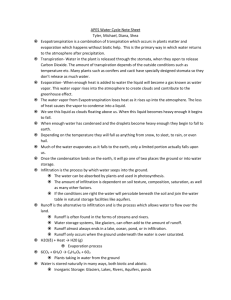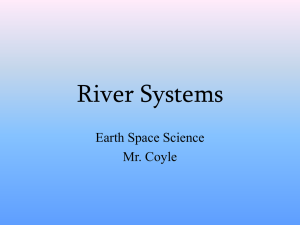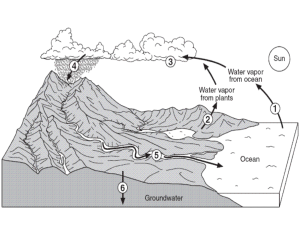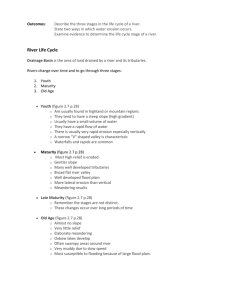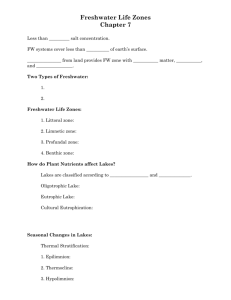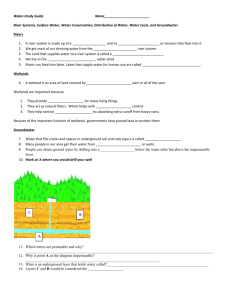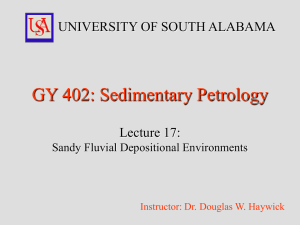Water Cycle Water Cycle Water Cycle Infiltration vs. Runoff
advertisement
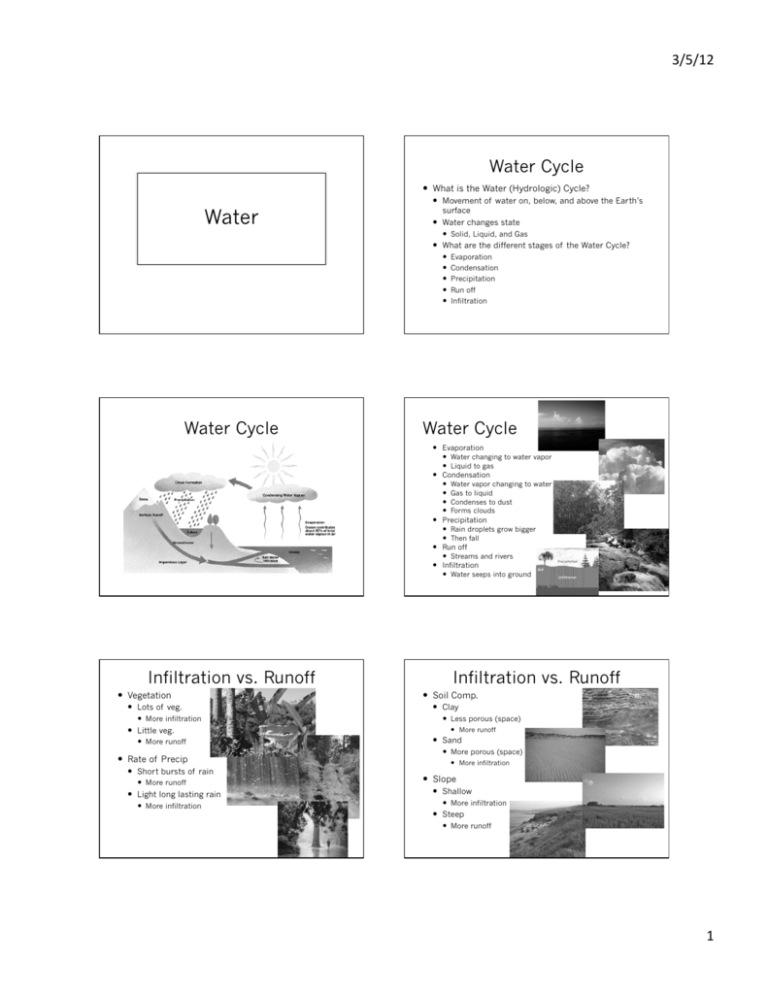
3/5/12 Water Cycle What is the Water (Hydrologic) Cycle? Water Movement of water on, below, and above the Earth’s surface Water changes state Solid, Liquid, and Gas What are the different stages of the Water Cycle? Water Cycle Evaporation Condensation Precipitation Run off Infiltration Water Cycle Evaporation Infiltration vs. Runoff Vegetation Lots of veg. More infiltration Little veg. More runoff Rate of Precip Short bursts of rain More runoff Light long lasting rain More infiltration Water changing to water vapor Liquid to gas Condensation Water vapor changing to water Gas to liquid Condenses to dust Forms clouds Precipitation Rain droplets grow bigger Then fall Run off Streams and rivers Infiltration Water seeps into ground Infiltration vs. Runoff Soil Comp. Clay Less porous (space) More runoff Sand More porous (space) More infiltration Slope Shallow More infiltration Steep More runoff 1 3/5/12 What drives the Water Cycle ! Surface Water Rivers and Streams Tributaries Streams that flow into larger streams Watershed All of the land area where water drains into a river system Divides High land area that separates watersheds Surface Water Stream Load All the material that the water in a stream carries 3 ways material is carried Solution Material dissolved in water Suspension Particles small enough to be carried by turbulence Bedload Large sediments that roll along the bottom Surface Water Surface Water Velocity (speed) and Size Streams load overtime of Sediments The higher the velocity Rocks become polished and rounded the… larger the sediments Larger/Faster rivers can carry more and larger sediments 2 3/5/12 Surface Water Surface Water Discharge What causes flooding? Measure of the volume of stream water that flows past a point for a certain time Carrying capacity The amount of material a river can carry Too much water (rain) River over flows its banks Why live on a floodplain? Fertile soils Great for farming What happens to carrying capacity if discharge increases? Carrying capacity increases with an increase in discharge Meandering Rivers Meandering Rivers Where they begin Headwaters Headward erosion Increases the length of the stream Channels shape V shape Meandering Rivers Conditions for Meandering River Decrease in slope Becomes wider Sediment increases Begins to bend Finds slightly lower elevation Meandering Rivers Highest Velocity Middle of the straight channel Why? Friction along edges and bends Outside of the curve Erosion Inside curve Deposition 3 3/5/12 Meandering Rivers Meandering Rivers Oxbow lake When a winding curve cuts off a meander Stream flows relatively straight Meandering Rivers Deltas vs. Alluvial Fans Where sediments are deposited Mouth of river (end of river) Delta Water Silt an clay Δ Alluvial Fan Dry land Sand and gravel Fan shaped Deltas vs. Alluvial Fans Delta Δ Lakes A body of still water in a basin surrounded by land How organisms effect lakes Plants add oxygen Fish use oxygen Bacteria feed on decaying Alluvial Fan organisms Use oxygen Fan shaped 4 3/5/12 Lakes Dissolved Oxygen Determines the quality of a lake Low in D.O. Not enough oxygen for fish High in D.O. Good for fish Lakes Eutrophication A lake is high in nutrients Effects Algae growth Plants die Settle at bottom of lake Bacteria feed off algae Increase in bacteria Use up oxygen Decrease in Dissolved Oxygen Decrease in Lake quality Lakes Age of Lakes Lakes Aquatic Life Zones Youngest Oligotrophic Middle aged Mesotrophic Oldest Eutrophic Increase in productivity PROFUNDAL Amount of solar energy converted to plant material through photosynthesis 5
